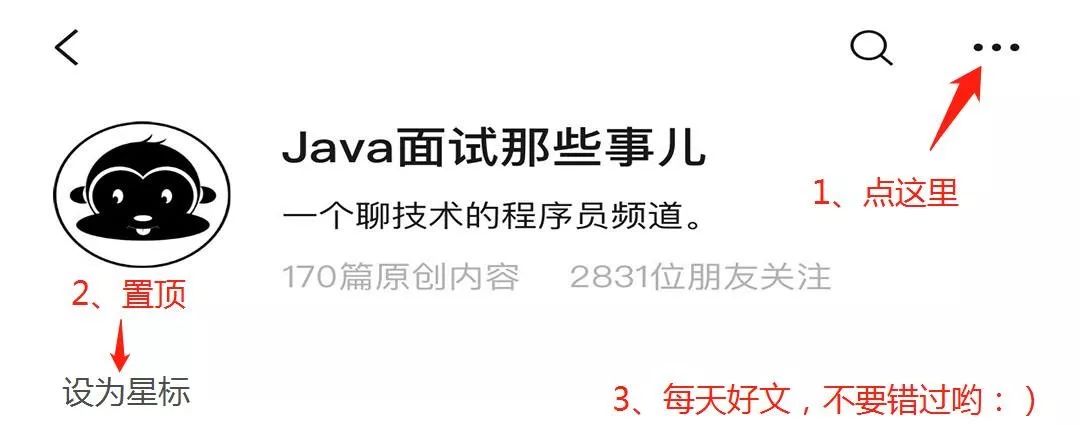
來源:http://my.oschina.net/zudajun
大多數框架,都支持插件,用戶可通過編寫插件來自行擴展功能,Mybatis也不例外。
我們從插件配置、插件編寫、插件運行原理、插件注冊與執行攔截的時機、初始化插件、分頁插件的原理等六個方面展開闡述。
# 插件配置
Mybatis的插件配置在configuration內部,初始化時,會讀取這些插件,保存于Configuration對象的InterceptorChain中。
<?xml version="1.0" encoding="UTF-8"?> public class Configuration { protected final InterceptorChain interceptorChain = new InterceptorChain();}org.apache.ibatis.plugin.InterceptorChain.java源碼。
public class InterceptorChain { private final List interceptors = new ArrayList(); public Object pluginAll(Object target) { for (Interceptor interceptor : interceptors) { target = interceptor.plugin(target); } return target; } public void addInterceptor(Interceptor interceptor) { interceptors.add(interceptor); } public List getInterceptors() { return Collections.unmodifiableList(interceptors); }}上面的for循環代表了只要是插件,都會以責任鏈的方式逐一執行(別指望它能跳過某個節點),所謂插件,其實就類似于攔截器。
# 如何編寫一個插件
插件必須實現org.apache.ibatis.plugin.Interceptor接口。
public interface Interceptor { Object intercept(Invocation invocation) throws Throwable; Object plugin(Object target); void setProperties(Properties properties);}intercept()方法:執行攔截內容的地方,比如想收點保護費。由plugin()方法觸發,interceptor.plugin(target)足以證明。
plugin()方法:決定是否觸發intercept()方法。
setProperties()方法:給自定義的攔截器傳遞xml配置的屬性參數。
下面自定義一個攔截器:
@Intercepts({ @Signature(type = Executor.class, method = "query", args = { MappedStatement.class, Object.class, RowBounds.class, ResultHandler.class }), @Signature(type = Executor.class, method = "close", args = { boolean.class }) })public class MyBatisInterceptor implements Interceptor { private Integer value; @Override public Object intercept(Invocation invocation) throws Throwable { return invocation.proceed(); } @Override public Object plugin(Object target) { System.out.println(value); // Plugin類是插件的核心類,用于給target創建一個JDK的動態代理對象,觸發intercept()方法 return Plugin.wrap(target, this); } @Override public void setProperties(Properties properties) { value = Integer.valueOf((String) properties.get("value")); }}面對上面的代碼,我們需要解決兩個疑問:
1. ?為什么要寫Annotation注解?注解都是什么含義?
答:Mybatis規定插件必須編寫Annotation注解,是必須,而不是可選。
@Intercepts注解:裝載一個@Signature列表,一個@Signature其實就是一個需要攔截的方法封裝。那么,一個攔截器要攔截多個方法,自然就是一個@Signature列表。
type = Executor.class, method = "query", args = { MappedStatement.class, Object.class,?RowBounds.class, ResultHandler.class }
解釋:要攔截Executor接口內的query()方法,參數類型為args列表。
2. Plugin.wrap(target, this)是干什么的?
答:使用JDK的動態代理,給target對象創建一個delegate代理對象,以此來實現方法攔截和增強功能,它會回調intercept()方法。
org.apache.ibatis.plugin.Plugin.java源碼:
public class Plugin implements InvocationHandler { private Object target; private Interceptor interceptor; private Map, Set> signatureMap; private Plugin(Object target, Interceptor interceptor, Map, Set> signatureMap) { this.target = target; this.interceptor = interceptor; this.signatureMap = signatureMap; } public static Object wrap(Object target, Interceptor interceptor) { Map, Set> signatureMap = getSignatureMap(interceptor); Class> type = target.getClass(); Class>[] interfaces = getAllInterfaces(type, signatureMap); if (interfaces.length > 0) { // 創建JDK動態代理對象 return Proxy.newProxyInstance( type.getClassLoader(), interfaces, new Plugin(target, interceptor, signatureMap)); } return target; } @Override public Object invoke(Object proxy, Method method, Object[] args) throws Throwable { try { Set methods = signatureMap.get(method.getDeclaringClass()); // 判斷是否是需要攔截的方法(很重要) if (methods != null && methods.contains(method)) { // 回調intercept()方法 return interceptor.intercept(new Invocation(target, method, args)); } return method.invoke(target, args); } catch (Exception e) { throw ExceptionUtil.unwrapThrowable(e); } }//...}Map, Set> signatureMap:緩存需攔截對象的反射結果,避免多次反射,即target的反射結果。
所以,我們不要動不動就說反射性能很差,那是因為你沒有像Mybatis一樣去緩存一個對象的反射結果。
判斷是否是需要攔截的方法,這句注釋很重要,一旦忽略了,都不知道Mybatis是怎么判斷是否執行攔截內容的,要記住。
# Mybatis可以攔截哪些接口對象?
public class Configuration {//...public ParameterHandler newParameterHandler(MappedStatement mappedStatement, Object parameterObject, BoundSql boundSql) { ParameterHandler parameterHandler = mappedStatement.getLang().createParameterHandler(mappedStatement, parameterObject, boundSql); parameterHandler = (ParameterHandler) interceptorChain.pluginAll(parameterHandler); // 1 return parameterHandler; } public ResultSetHandler newResultSetHandler(Executor executor, MappedStatement mappedStatement, RowBounds rowBounds, ParameterHandler parameterHandler, ResultHandler resultHandler, BoundSql boundSql) { ResultSetHandler resultSetHandler = new DefaultResultSetHandler(executor, mappedStatement, parameterHandler, resultHandler, boundSql, rowBounds); resultSetHandler = (ResultSetHandler) interceptorChain.pluginAll(resultSetHandler); // 2 return resultSetHandler; } public StatementHandler newStatementHandler(Executor executor, MappedStatement mappedStatement, Object parameterObject, RowBounds rowBounds, ResultHandler resultHandler, BoundSql boundSql) { StatementHandler statementHandler = new RoutingStatementHandler(executor, mappedStatement, parameterObject, rowBounds, resultHandler, boundSql); statementHandler = (StatementHandler) interceptorChain.pluginAll(statementHandler); // 3 return statementHandler; } public Executor newExecutor(Transaction transaction) { return newExecutor(transaction, defaultExecutorType); } public Executor newExecutor(Transaction transaction, ExecutorType executorType) { executorType = executorType == null ? defaultExecutorType : executorType; executorType = executorType == null ? ExecutorType.SIMPLE : executorType; Executor executor; if (ExecutorType.BATCH == executorType) { executor = new BatchExecutor(this, transaction); } else if (ExecutorType.REUSE == executorType) { executor = new ReuseExecutor(this, transaction); } else { executor = new SimpleExecutor(this, transaction); } if (cacheEnabled) { executor = new CachingExecutor(executor); } executor = (Executor) interceptorChain.pluginAll(executor); // 4 return executor; }//...}Mybatis只能攔截ParameterHandler、ResultSetHandler、StatementHandler、Executor共4個接口對象內的方法。
重新審視interceptorChain.pluginAll()方法:該方法在創建上述4個接口對象時調用,其含義為給這些接口對象注冊攔截器功能,注意是注冊,而不是執行攔截。
攔截器執行時機:plugin()方法注冊攔截器后,那么,在執行上述4個接口對象內的具體方法時,就會自動觸發攔截器的執行,也就是插件的執行。
所以,一定要分清,何時注冊,何時執行。切不可認為pluginAll()或plugin()就是執行,它只是注冊。
#?Invocation
public class Invocation { private Object target; private Method method; private Object[] args;}intercept(Invocation invocation)方法的參數Invocation ,我相信你一定可以看得懂,不解釋。
# 初始化插件源碼解析
org.apache.ibatis.builder.xml.XMLConfigBuilder.parseConfiguration(XNode)方法部分源碼。
pluginElement(root.evalNode("plugins")); private void pluginElement(XNode parent) throws Exception { if (parent != null) { for (XNode child : parent.getChildren()) { String interceptor = child.getStringAttribute("interceptor"); Properties properties = child.getChildrenAsProperties(); Interceptor interceptorInstance = (Interceptor) resolveClass(interceptor).newInstance(); // 這里展示了setProperties()方法的調用時機 interceptorInstance.setProperties(properties); configuration.addInterceptor(interceptorInstance); } } }對于Mybatis,它并不區分是何種攔截器接口,所有的插件都是Interceptor,Mybatis完全依靠Annotation去標識對誰進行攔截,所以,具備接口一致性。
# 分頁插件原理
由于Mybatis采用的是邏輯分頁,而非物理分頁,那么,市場上就出現了可以實現物理分頁的Mybatis的分頁插件。
要實現物理分頁,就需要對String sql進行攔截并增強,Mybatis通過BoundSql對象存儲String sql,而BoundSql則由StatementHandler對象獲取。
public interface StatementHandler { List query(Statement statement, ResultHandler resultHandler) throws SQLException; BoundSql getBoundSql();}public class BoundSql { public String getSql() { return sql; }}因此,就需要編寫一個針對StatementHandler的query方法攔截器,然后獲取到sql,對sql進行重寫增強。
任它天高海闊,任它變化無窮,我們只要懂得原理,再多插件,我們都可以對其投送王之蔑視。
熱文推薦Java面試題匯總(04)
12月DB-Engines數據庫排名,你猜誰會是第一?
老弟,你連HTTPS 原理都不懂,還給我講“中間人攻擊”,逗我嗎...


覺得不錯,請給個「在看」
分享給你的朋友!

- End -



)



)




![[CDA數據分析師學習之路] 【CDA就業班獨家發布】學習之路](http://pic.xiahunao.cn/[CDA數據分析師學習之路] 【CDA就業班獨家發布】學習之路)






